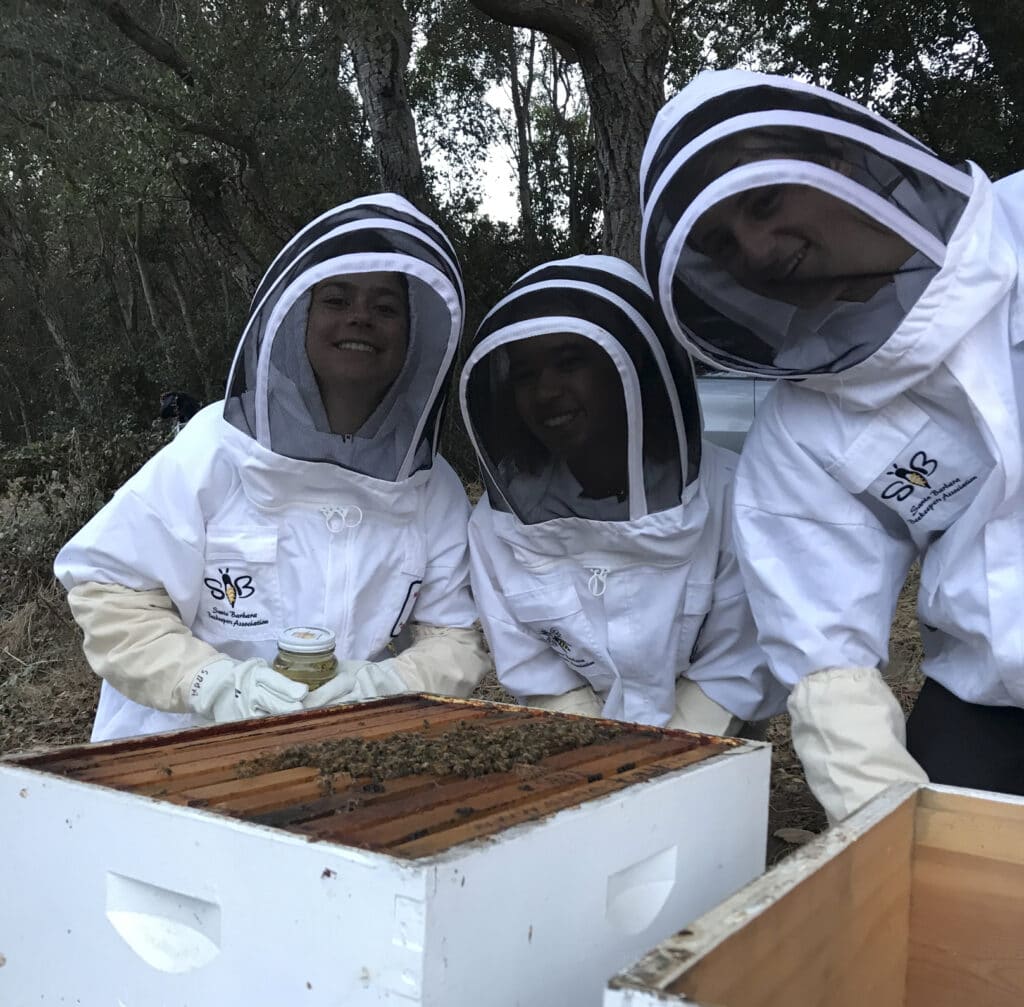Club Corner: Beekeeping
January 11, 2018
“We’re looking to see if there’s a queen,” says Tom, a volunteer from the Santa Barbara Beekeeping Society. We are on the Cate Nature Trail, a hidden gem just a stone’s throw from Mesa House. Three members of another gem, the Cate Beekeeping Club, are suited up and are approaching a beehive box right off the trail.
It’s clear from the start that beekeeping is as much an art as it is a science. The students run a gloved hand under the cover of the box to displace any black widow spiders that often nest there. They then use a piece of metal like a giant can opener to pry up the individual frames that the bees build their hive on. It’s a slow, delicate process to avoid squishing the agitated bees.
There’s no queen here. They can tell because there are no eggs. “Queens can lay more than 1000 eggs a day,” says Tom.
While the hive is open the group checks for small hive beetles and wax moths. Another potential red flag is a dirty hive. “Bees love a very clean hive,” so a mess is indicative of a larger problem. It turns out there are beetles, but the group is optimistic nonetheless because the bees still seem quite healthy.
An ungloved hand over the top reveals the sauna-like temperature within. The group closes the hive and mixes some food to nourish the bees through the winter – 2 to 1 sugar water syrup. Tom warns that too much food will make the bees lazy and dependent on the supplemental nectar.
Moving forward two options seem most likely to save the hive. They can try to introduce a new queen. They can also try to merge this queenless hive with an established one. And while the situation may be life or death for the bees, the Beekeeping Club is anything but stressed. They are engaged and excited about hands-on problem solving outside the classroom.
Pheobe Hurwitz ’19 says “It’s so fun. I don’t think anyone realizes until they come down here. One in three bites of food comes from a bee. Most people don’t know how valuable bees are.” Elle Smith ’19 says she used to be afraid of bees and her natural instinct was to run from them. She says, “After talking with Tom and listening to his passion for bees I can now say I too have a passion for bees. My encouragement to others would be to learn more about them and how much they help us.”
